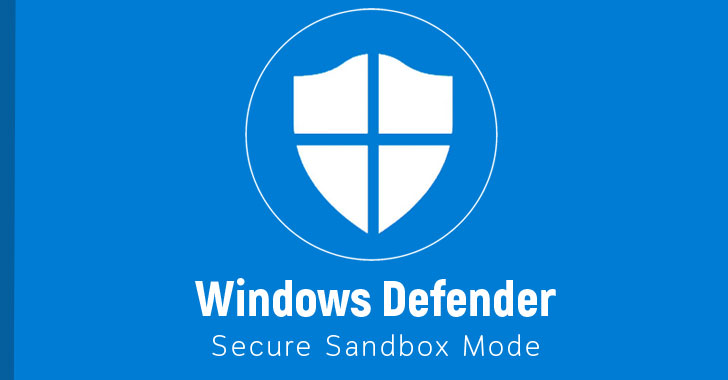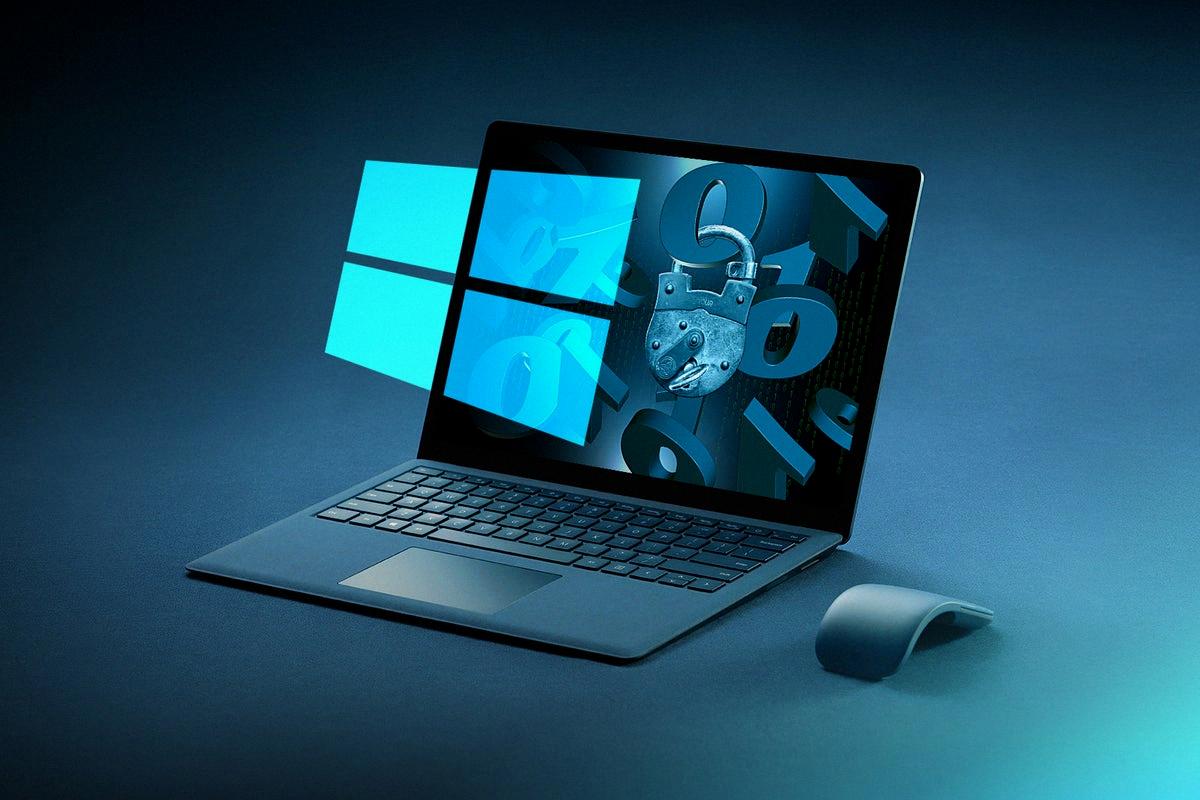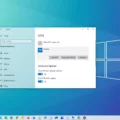Windows Defender is one of the most widely used antivirus programs available for Windows 10, and for good reason. It’s powerful, easy to use, and it’s included in the Windows operating system. While Windows Defender does offer essential cybersecurity protections, it may not provide enough to keep you fully protected in today’s digital landscape.
To start off with the basics, what is Windows Defender? It’s a free antivirus program that comes as part of the Microsoft Windows 10 operating system. It provides basic protection against viruses, malware, rootkits, and other malicious software by scanning files on your computer and providing real-time protection against threats. With automatic updates enabled, it will also keep itself up to date with the latest virus definitions.
However, due to its limited feature set compared to more comprehensive antivirus solutions such as Norton or Bitdefender, you may need additional protection beyond what Windows Defender can provide. For instance, some of these comprehensive solutions offer endpoint protection and response plus automated investigation and remediation which are essential for proper security in 2021 and beyond.
But don’t worry if you’re budget conscious or just want a basic level of protection – Microsoft offers a free version of its cloud-based security solution called Microsoft Defender for Cloud. This service is free for the first 30 days but any usage beyond that will be charged according to their pricing scheme which can be found on their website.
while Windows Defender provides basic antivirus protection for your computer (which is better than nothing!), it may not be enough to protect your computer from sophisticated threats in 2021 and beyond. If you prefer more comprehensive security coverage then consider investing in an alternative antivirus such as Norton or Bitdefender which offers a range of features including endpoint protection and response plus automated investigation and remediation services.

Do I Need Additional Antivirus Protection If I Have Windows Defender?
Yes, you do need an antivirus if you have Windows Defender. Windows Defender is a basic antivirus program that comes pre-installed on Windows 10 computers. While it provides basic protection against potential threats, it cannot protect against more sophisticated attacks like ransomware, or offer additional features like endpoint protection and response, automated investigation, and remediation. To get the most comprehensive security coverage for your computer, it is recommended that you supplement Windows Defender with a full-featured antivirus solution.
Enabling Windows Defender
To turn Windows Defender on, you must first open Settings. Select the Start button, then select Settings. Once in Settings, select a network profile that best fits your current connection (Domain network, Private network, or Public network). Under Microsoft Defender Firewall, switch the setting to On. Once this is complete, Windows Defender is turned on and will provide an extra layer of protection for your computer.
The Cost of Windows Defender
Microsoft Defender for Cloud is available with a variety of pricing options depending on the resource type and usage. For the first 30 days, Microsoft Defender for Cloud is free. After that, you will be charged a fee based on the type of resource and usage. For example, Microsoft Defender for Containers is priced at $0.0095/vCore/hour. Additionally, there are fees associated with other resource types such as Microsoft Defender for IoT and Microsoft Defender for Endpoint. To find out more about these fees and explore pricing options in detail, please visit the official website.
The Effectiveness of Windows Defender as an Antivirus
Windows Defender is a good choice for basic protection against viruses and other malware. It’s free, comes built-in to Windows 10, and is regularly updated. However, it doesn’t provide the same level of security as some other antiviruses. If you’re looking for more robust protection in 2023, you should consider investing in a paid antivirus like Norton, Bitdefender, or TotalAV. These paid solutions are more comprehensive and offer additional features such as anti-phishing measures, real-time scanning, and ransomware protection.
Can Windows Defender Detect All Viruses?
No, Windows Defender cannot detect all viruses. It uses a combination of machine learning and signature-based detection to protect your device from the latest threats. However, it is not capable of detecting every type of virus out there. To ensure the most comprehensive protection, you should use additional antivirus software in addition to Windows Defender.
Comparing Windows Defender and McAfee: Which is Better?
It is difficult to definitively say which antivirus software is better, as both Windows Defender and McAfee performed well in the December 2021 test. Windows Defender scored a 6-star rating for its outstanding performance, while McAfee scored a 6-star rating for malware protection. Ultimately, it depends on the user’s individual needs and preferences.
Windows Defender provides great protection against viruses, ransomware, and other malicious software without impacting system performance. Its interface is easy to use and navigate, making it suitable for novice users. It is also integrated into Windows 10 systems and requires no additional installation or setup.
McAfee provides multiple layers of protection against online threats and provides advanced customization options that are suitable for more experienced users. It also offers several additional features such as parental controls, secure browsing tools, and an active firewall that can help protect your device from external threats.
No matter which antivirus software you choose, it’s important to do your research to ensure that you’re getting the best product for your needs.
Verifying If Windows Defender Is Enabled
If you wish to know if Windows Defender is on, you can check by following these steps:
1. Select the “Update and Security” option in your computer’s settings.
2. Select “Windows Security” from the menu that appears.
3. Look for a section called “Virus & threat protection” and ensure that it is enabled.
If the section is enabled, there should be a shield icon next to it, indicating that Windows Defender is running and active.
Checking If Windows Defender Is Installed on a Computer
To check if your computer has Windows Defender, open the Windows Security app on your device. In the Virus & Threat protection section, you can view information about the current protection status of your device. If Microsoft Defender Antivirus is running, you will see a green checkmark next to it and the message “Protection is up to date” underneath it. If Microsoft Defender Antivirus is not running, you will see a red cross next to it and the message “Protection is off” underneath it. You can also go to Settings > Update & Security > Windows Security > Open Windows Security to access this information.
Reasons Why Windows Defender Has Been Turned Off
Windows Defender may have been turned off for a few different reasons. Malware or other malicious software might have disabled it, or you may have disabled it yourself accidentally or intentionally. It’s also possible that your administrator has disabled it, either in your operating system’s settings or on your network. If you’re not sure why Windows Defender has been turned off, the best thing to do is run a malware scan to make sure your system isn’t infected.

Source: csoonline.com
Disadvantages of Windows Defender
Windows Defender has some disadvantages that should be taken into consideration when deciding if it is the right security solution for your needs. Firstly, Windows Defender lacks an integrated dashboard to monitor all devices that use it. This means that you cannot easily check the status of all the computers in your network at once. Secondly, there is no accountability if a computer running Windows Defender becomes infected with malware. Thirdly, Windows Defender only offers limited features compared to other security solutions, making it unsuitable for large-scale use. Finally, constant scanning can slow down the installation of frequently-used applications on your computer.
Does Windows Defender Effectively Remove Trojans?
Yes, Windows Defender can detect and remove Trojans. It uses real-time protection to monitor your computer for suspicious activity, such as new or modified files that match the characteristics of known trojans. If it finds suspicious activity, it will quarantine, delete or alert you so that you can take further action. The Windows Defender Offline Scan is also available which is a powerful scanning tool that helps identify and remove rootkits and other advanced malware that may not be detected by your regular antivirus software.
Is Windows Defender Available for Free?
Yes, Windows Defender is a free service offered as part of your Windows operating system. It provides comprehensive protection from malware and other threats, such as viruses, worms, rootkits, Trojans, and spyware. Windows Defender is automatically enabled on all Windows systems and will detect and remove any malicious software that it finds. It also provides real-time protection against new threats that may arise, protecting your system from being compromised. Additionally, Microsoft regularly updates the software to keep up with the latest security threats.
Does Windows Defender Scan for Malware?
Yes, Windows Defender scans for malware in real-time to protect your device from any potential threats. Windows Defender runs scans in the background which constantly monitor your device for any malicious software, viruses, and other security threats. Windows Defender also downloads updates automatically to ensure that your device is always up-to-date and secure. In addition, you can also manually start a scan if you want to check your device for any possible threats.
Is Windows Defender a Firewall or Antivirus?
Windows Defender is both an antivirus and a firewall. As a Windows-based security program, it provides real-time protection against malware and other threats, as well as a firewall to block malicious connections to your PC. It also includes features such as file scanning, virus definition updates, and parental control. Windows Defender identifies viruses, worms, spyware, ransomware, rootkits, and other potential threats before they can harm your PC or networks. With its advanced technologies and cloud-based protection capabilities, Windows Defender ensures that you are safe online while using your computer.
Conclusion
In conclusion, Windows Defender is a great basic antivirus solution that offers essential cybersecurity protections and is completely free to use. However, if you are looking for a more robust security solution with advanced features, then you should consider investing in an alternative antivirus such as Norton, Bitdefender, or TotalAV. These solutions provide better quality protection and can help keep your devices safe from the latest cyber threats in 2023 and beyond.








